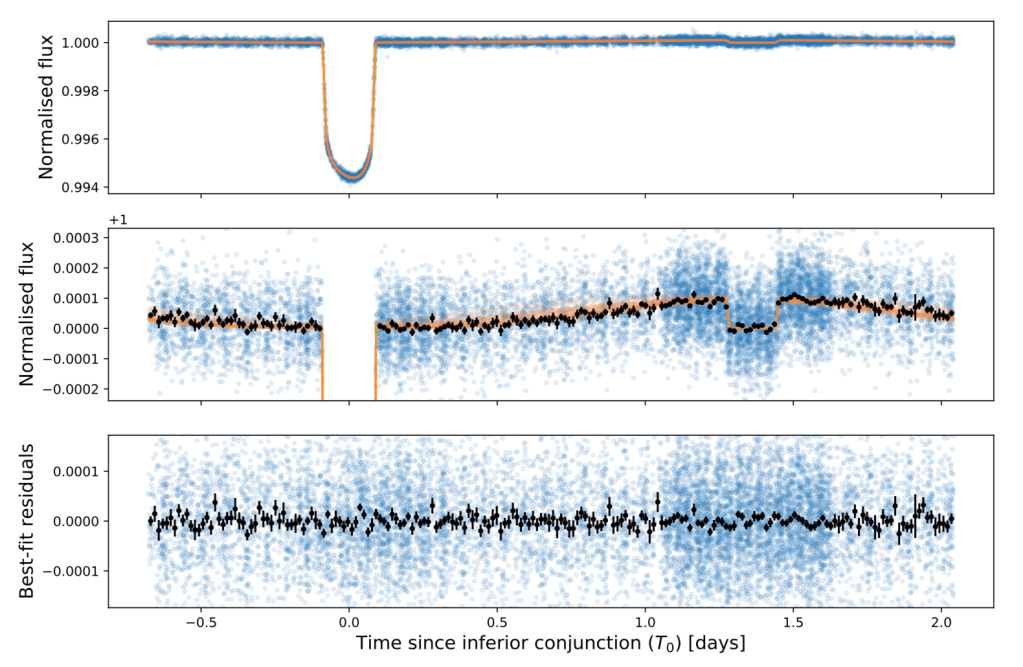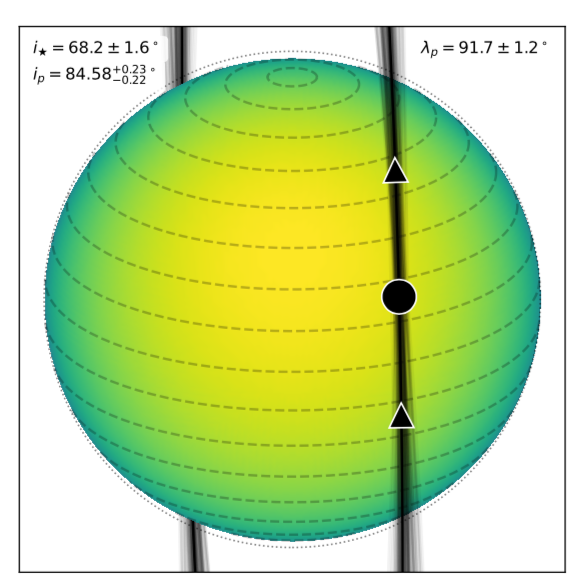ESA’s CHEOPS satellite was launched to produce high-quality light-curves of exoplanet systems. A new paper led by Adrien Deline of the University of Geneva now reports CHEOPS observations around the orbit of the ultra-hot-Jupiter WASP-189b. The figure shows the transit (planet passing in front of the star), the eclipse (the planet passing behind the star) and a slower variation caused by the varying visibility of the heated face of the planet.

One notable feature of the transit of WASP-189b is that it is distinctly asymmetrical. This is caused by gravity darkening, which occurs when a star is rapidly rotating. The centrifugal forces cause the equatorial regions to be pushed outwards, producing an equatorial bulge. Since the bulge is then further from the star’s centre, the surface gravity will be lower, and that means that the surface will be cooler and thus dimmer.
The illustrations below show the asymmetry, where the dashed line in the lowest panel shows the difference between a transit model both with and without gravity darkening. The right-hand panel illustrates the polar orbit of the planet.




